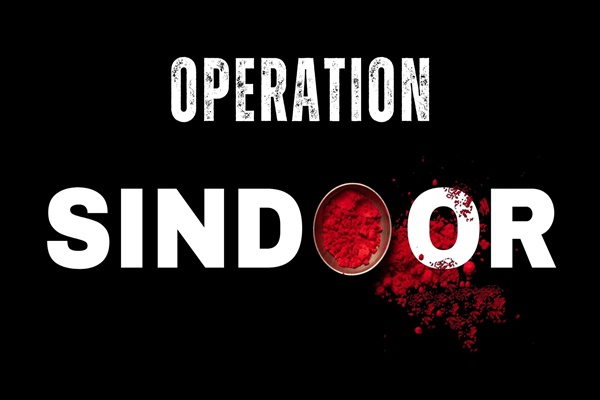
Operation Sindoor
Tensions between South Asia’s nuclear powers soared early Wednesday as India launched a series of precision airstrikes on nine terror-linked sites inside Pakistan and Pakistan-administered Kashmir (PoK), in a dramatic military response to last month’s deadly Pahalgam attack. The operation, codenamed Operation Sindoor, marks the most significant escalation in the region in years and has prompted urgent calls for restraint from Washington and other world capitals.
Targeted Retaliation After Massacre of Civilians
The Indian government said the strikes were a “measured and non-escalatory” retaliation for the April 22 Pahalgam massacre, in which 26 people-including 25 Indian nationals and one Nepali citizen-were killed by armed militants in the popular tourist destination in Kashmir. Indian officials accused Pakistan-based groups of orchestrating the attack, a charge Islamabad denies.
According to the Indian Ministry of Defence, the operation targeted nine specific sites identified as terrorist infrastructure belonging to groups such as Jaish-e-Mohammed (JeM), Lashkar-e-Taiba (LeT), and Hizbul Mujahideen (HM). The strikes, carried out by the Indian Army, Navy, and Air Force, were completed in under half an hour and, according to Indian authorities, deliberately avoided Pakistani military or civilian installations.
“Our actions have been focused, measured and non-escalatory in nature. No Pakistani military facilities have been targeted. India has demonstrated considerable restraint in selection of targets and method of execution,” the Indian Ministry of Defence said in a statement.
Swift Global Reactions: U.S. Calls for Restraint
The United States responded quickly to the developments, with President Donald Trump expressing hope that the hostilities “end very quickly.” Speaking to reporters at the White House, Trump remarked, “It’s a shame. We just heard about it… They’ve been fighting for a long time… I just hope it ends very quickly”.
Secretary of State Marco Rubio echoed the President’s sentiments, stating via social media, “I am monitoring the situation between India and Pakistan closely. I echo @POTUS’s comments earlier today that this hopefully ends quickly and will continue to engage both Indian and Pakistani leadership towards a peaceful resolution”. Rubio also spoke directly with India’s National Security Advisor Ajit Doval and his Pakistani counterpart, urging both sides to keep lines of communication open and avoid further escalation.
The U.S. State Department, while refraining from a detailed assessment, confirmed it is “closely monitoring developments” in the region.
International Community Urges De-escalation
The United Nations Secretary-General António Guterres voiced “deep concern” and called for “maximum military restraint” from both countries, warning that further confrontation could destabilize the region. The United Arab Emirates and Israel also weighed in, with the UAE urging de-escalation and Israel affirming India’s right to self-defense.
Pakistan’s Response and Rising Tensions
Pakistan’s military claimed it had downed five Indian Air Force jets and launched retaliatory strikes on Indian positions, describing India’s actions as “an act of war”. Islamabad has denied any involvement in the Pahalgam attack and accused India of risking regional security with its cross-border strikes.
What’s at Stake for the United States
With both India and Pakistan possessing nuclear arsenals and a history of unresolved disputes, the latest escalation is being watched closely in Washington. The U.S. has significant strategic partnerships with both countries, and any prolonged conflict could threaten regional stability, disrupt global supply chains, and complicate American interests in South and Central Asia.
The Biden administration has emphasized the need for “zero tolerance for terrorism” while also advocating for diplomatic solutions to prevent further escalation.
Looking Ahead
Indian officials have announced a detailed briefing on Operation Sindoor later today. In the interim, the world is watching anxiously as both sides weigh their next moves.
For Americans, the situation underscores the volatility of South Asia and the importance of continued U.S. engagement and mediation in the region to prevent a wider conflict.
This is a developing story. Stay tuned for updates as more information becomes available.






